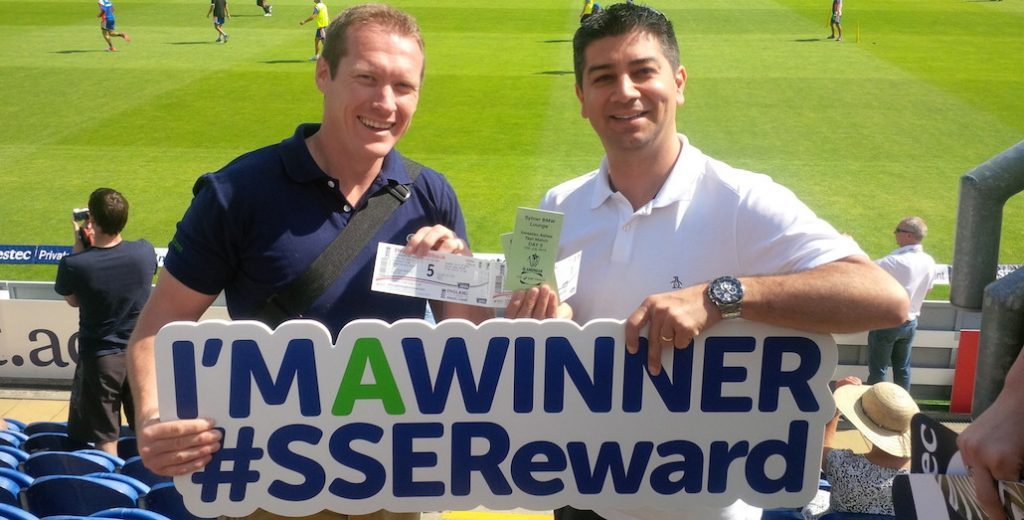Measuring The Effectiveness Of Experiential
In a competitive world, experiential is becoming an increasingly popular way of interacting with loyal customers, introducing new products to the marketplace, and re-engaging on a more personal level.
It would be very difficult to question the wow-factor that the best experiential activations carry, and the immediate buzz that’s created when a concept is brilliantly executed and brought to life, but the widespread opinion is that experiential marketing is not the easiest form of advertising to measure. And many marketers are put off by this.
Unsurprisingly, we disagree! Measuring experiential is not only possible, but it can be measured really effectively. Here’s how…
1. Activity Statistics
Record everything that happens on the day! At eventeem we make it the event manager’s responsibility to record absolutely everything that goes on so that we can feed back to our clients with as much information as we possibly can to make their experience measuring the campaign effectiveness as smooth as possible. Information that can not only be used to evaluate the effectiveness of the activation, but also be used to make informed decisions when it comes to improving your next experiential campaign. The data we choose to record can include:
- Number of consumer engagements
- Quantity of samples/literature distributed
- Demographic information
- Customer feedback
And of course we can tailor reporting to suit each campaign. For example if sampling in-store, we can quite often obtain expected and actual sales data for the sampling day so that sales uplift can be accurately recorded.
2. Data Capture
If you require your promotional staff to conduct data capture at your event, measuring the number of leads or data entries collected becomes easy. We suggest that you invest in iPad hire; whilst it’s a little more expensive than paper pads, it looks significantly more professional and removes the potential for hard-to-read handwriting! You can also use required fields to ensure that the important bits of information you need are not missed.
Many iPad survey apps will have the ability to import the event data directly into your CRM system, thus saving your team a good few hours of data entry. Once imported into your CRM system you now have the ability to monitor your consumer’s journey and engagement with your brand communications, further adding to your experiential ROI.
3. Photos & Video
Always ask your promotional team to keep a visual diary of your experiential activity by taking as many photos and video clips as possible, so that you can gauge customer reaction first hand. They should also be encouraging consumers to take photos (or selfies!) of their interaction with your activity, to share with their social media networks.
But don’t forget, the job of an event manager is an extremely busy one so if you do have budget to invest in a professional photographer or videographer that can concentrate on just that, then we believe that will definitely be money well spent. We took our own advice and hired a videographer during our campaign with Rachel’s Organic, finding that not only did it provide a useful tool for measuring consumers’ reactions to the event, but also a valuable piece of content for social media:
4. Social Media
Social media and experiential were just made for each other. These days almost all marketers engage on at least one social media platform, albeit some more than others. When engaging with your target audience face-to-face, it’s the perfect time to drive them to your social media channels. Noticed a whole load of new likes, follows and interactions during or after your experiential campaign? Well you can be sure that these are another side effect of your face-to-face engagement. Measuring the effectiveness of your campaigns become easy when your consumers are bringing the data to you.
Still not convinced? Then why not devise a hashtag specific to your experiential campaign, leaving no doubt that each person using it has interacted with your activity. Either way, make sure your social media handles and hashtags are clearly visible on event collateral, and even on staff uniforms.

There are a number of ways you can increase social engagement through your experiential campaign, contact us for ideas!
5. Vouchers/Coupons
Everyone loves a money-off voucher so you know that these will be received well by your target audience. They work particularly well if your experiential activity is conducted at point of sale. What better way to get your customer to add your product to their shopping basket than by giving them an incentive to purchase?
But many customers will prefer to purchase at a later date, so make sure that your vouchers are specific to the experiential activity so that any sales uplift achieved as a result of their distribution can be directly attributed to your campaign.
If you would like to discuss an experiential idea, perhaps you already have a concept that needs implementing and staffing, contact us as we would love to help!